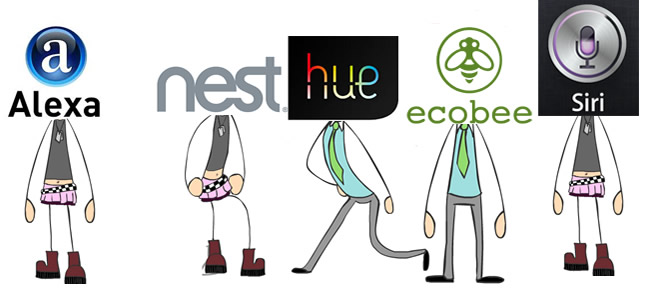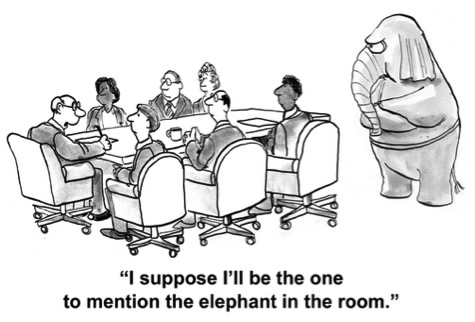 By Simon Buddle, Future Ready Homes.
By Simon Buddle, Future Ready Homes.
With the seasonal holidays comes time for a little DIY. The outside tap pipe needs to be lagged, and there’s wood to be chopped for the fire. Then there is the shaver socket in the bathroom that needs to be rewired – the previous owners of the flat thought that it would be a useful feature to only have the shaver socket operational when the lights were on. Strange choice I’d say!
The other bit of DIY which I’m much more inclined to get on with is the setting up of my Amazon Alexa, Philips Hue lights and the Google Nest thermostat that I’ve been loaned to try out. I download the Amazon Echo app followed by the Philips Hue and Nest. All easy stuff. Now for the clever bit: I’d like to setup my lighting and heating so that I can operate a simple home or away function via Alexa. Ah, problem: the Google Nest and Amazon Alexa ‘smart devices’ don’t talk to each other. Like two teenagers at a youth club who refuse to acknowledge each other’s presence, the devices are in the same room but unable to communicate.
After a bit more searching online, it turns out that you can download a third-party app to get them on speaking terms. Using the IFTTT (If This Then That) app allows one to use or create ‘recipes’ or, more accurately, scripts that can be triggered by events or button pushes. I must be honest, this wasn’t how I expected it to go: we live in a Smart World – everything is easy now, so they tell us. It turns out that Hue and Nest will talk to each other quite happily, but Alexa is not invited to be in their gang.

Perhaps Siri will work with Nest. Now I’m not a fan of Siri (something to do with the fact that I believe that apples are not the only fruit), but that’s for another time. Damn. It seems not. But she does work with Ecobee. I’m beginning to get the sense that this Smart World is more akin to a youth club than we might have first imagined, with all of its cliques, tensions and dramas.
The Elephant in the Room
Here’s the issue as far as I understand it; our customers are not being told the truth, the whole truth and nothing but the truth. The big hitters in the marketplace are only telling a part, or at least only their part, of the story. In the eyes of the consumer, all of these new smart devices are simply plug ‘n play, and all integrate seamlessly together, right? Wrong. They have all formed their own cliques and this is increasingly becoming a problem as consumers find the items that they have purchased simply do not talk to one another.

The truth of that matter is this: if devices do not work simply and easily together, they will be consigned to the bin. Consumers will return to more traditional but functioning equipment and consider the ‘smart’ marketplace a technical failure. The elephant in the room has to be addressed and we should consider that as part of our area of expertise. ‘No, no, no, no, no, no, no!’ I hear some you shout, as if to copy Ben Kingsley’s character addressing Ray Winstone in the film Sexy Beast. Bury your head in the sand or be the expert – the choice is yours, but these devices are not going away and consumers need people to help them with their choices, and probably the set-up and maintenance of them too.
Back to the elephant; each major player is setting up a silo with the set of devices they want to communicate with (read ‘sell’). The smart system devices operate in isolation from others, thus containing the end-user within this particular product set. For sure, everybody is claiming interoperability with everyone else – they’ve all got an API (Application Programming Interface). And that is true, BUT someone has to write the API. Coming back to our youth club analogy, the API is the diplomat that becomes the intermediary when communications are required.

Understanding What Works with What
If your client wants a cute-looking thermostat or lock, but would like it to work in conjunction with the KNX protocol, then there’s a way to achieve that. Either using the API or, in a more basic form, by ‘reading’ the relay output as a demand signal from the thermostat/lock. If the client simply wants to take the DIY route, that is their choice, but how we respond to the problems and subsequently resolve them, will define us in their eyes. A clear understanding of which products will communicate together without the need for API or IFTTT is vital knowledge for the installer.
Whilst we endeavour to sell our KNX solution, it is inevitable that we will be asked questions about other smart devices, and we may in some cases either interface with them or help customers to set them up. People perceive us as the ‘go to’ tech- savvy people – these devices need to be part of our vocabulary and that vocabulary must be right if we are to be credible.
Conclusion
Knowing which silo each smart device sits in, is part of the underpinning knowledge that sets us up as the experts in the technology minefield that surrounds everyone today. Hopefully, it won’t be our customer throwing away a smart device that we recommended, because if it is, you might just hear some teeth kissing, youth club style!
Simon Buddle is a consultant for Future Ready Homes, a specialist in BMS and ELV services system design. Simon is also a regular contributor to KNXtoday magazine.
You are welcome to comment on this article. See below.












